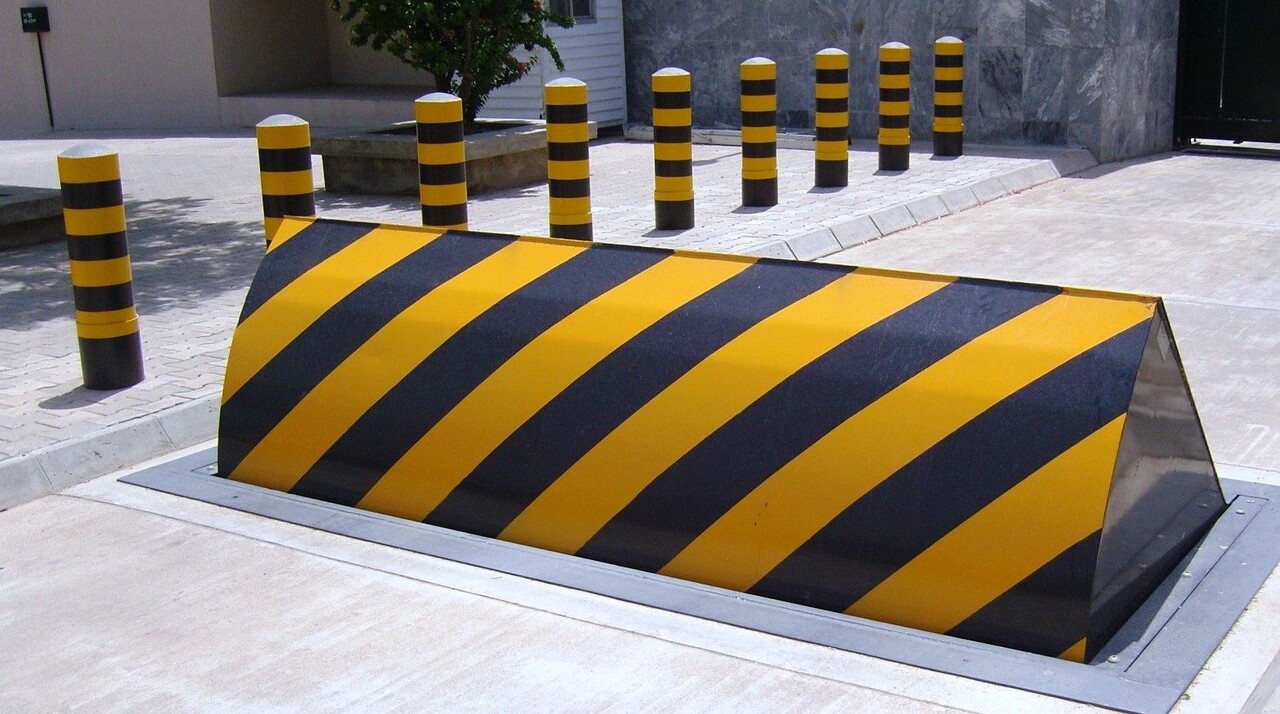Some Known Details About Wedge Barriers

Wedge Barriers for Beginners
The staying pressure applied to
the cam web cam deploy the wedge plate 16 may be provided given an electromechanical actuator 84 or other various other. The spring assembly 54 and the actuator 84(e. Wedge Barriers. g., electromechanical actuator)might operate together to equate the webcam and raise the wedge plate 16.
As mentioned over, the spring setting up 54 applies a constant force on the web cam, while the electromechanical actuator may be regulated to exert a variable pressure on the camera, consequently allowing the lifting and decreasing( i. e., releasing and withdrawing )of the wedge plate 16. In certain embodiments, the constant force applied by the spring assembly 54 might be flexible. g., electromechanical actuator) is disabled. As will certainly be appreciated, the springtime setting up 54 might be covered and protected from particles or other aspects by a cover plate(e. g., cover plate 68 shown in FIG. 4) that might be considerably flush with the elevated surface area 38 of the structure 14. As discussed over, in the released placement, the wedge plate 16 serves to block gain access to or traveling beyond the barrier 10. For instance, the obstacle 10(e. g., the wedge plate 16 )may obstruct pedestrians or vehicles from accessing a property or pathway. As reviewed over, the obstacle 10 is affixed to the anchor 30 safeguarded within the structure 14,

front brackets 71. Consequently, the affiliation assemblies 72 might pivot and revolve to allow the collapse and expansion of the affiliation assemblies 72 throughout retraction and implementation of the bather 10. The linkage settings up 72 cause motion of the wedge plate 16 to be restricted. If a vehicle is taking a trip in the direction of the released wedge plate 16(e. For instance, in one circumstance, the safety legs 86 may be expanded throughoutmaintenance of the barrier 10. discover here When the safety legs 86 are deployed, the security legs 86 support the weight of the wedge plate 16 versus the surface 12. Therefore, the training system 50 may be deactivated, serviced, gotten rid of, replaced, etc. FIG. 5 is partial perspective view of an embodiment of the surface-mounted wedge-style barrier 10, illustrating the webcam 80 and the webcam surfaces 82 of the lifting mechanism 50. Specifically, 2 camera surfaces 82, which are described as reduced camera surfaces 83, are placed listed below the camera 80. The lower web cam surface areas 83 may be repaired to the surface 12 (e. As an example, the lower webcam surfaces 83 and the placing plate 85 may form a solitary Bonuses piece that is safeguarded to the support 30 by screws or various other mechanical fasteners. In addition, two webcam surface areas 82, which are described as upper web cam surfaces 87, are positioned above the cam 80 and coupled to (e. In various other personifications, interfering layers or plates may be positioned in between the surface 12 and the lower webcam surface areas 83 and/or the wedge plate 16 and the top web cam surface areas 87 As pointed out over, the cam
80 converts along the camera surfaces 82 when the wedge plate 16 is lifted from the withdrawed placement to the released placement. Additionally, as pointed out over, the spring setting up 54 (see FIG. 3 )might offer a pressure acting on the cam 80 in the direction 102 by means of spring rod 58, which may minimize the force the electromechanical actuator 84 is called for to apply to the webcam 80 in order to activate and raise the wedge official statement plate 16. 1 )to the deployed placement(see FIG. 4). As revealed, the webcam 80 includes track wheels 104(e. g., rollers), which call and equate along the web cam surfaces 82 throughout operation.